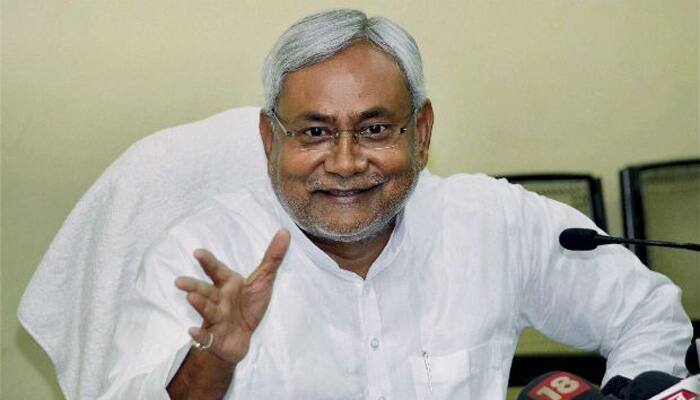Patna: JD(U) leader Nitish Kumar, who is looking for a third term, has made tall claims of pushing growth and development in Bihar during his ten year tenure as chief minister. As the state goes to polls next month, the electioneering has gained momentum and all major stake holders are trying to woo voters through lucrative sops, promises and on the basis of the work done by them in the past.
However, the big question here is - has Bihar really changed under Nitish Kumar's leadership in all these years?
Given below are some facts:-
- Based on 2004-5 prices, the per capita NSDP in Bihar was 7914 in 2005, which is 15650 in 2015.
- The state of Bihar recorded a growth rate of 17.99% at current price during 2014-14. In 2004-05, the Gross State Domestic Product (GSDP) was Rs.77,781.16 crore, which increased in 2014-15 to Rs.402,282 crore.
- The plan expenditure was Rs. 3,124.32 crore in 2004-05, which increased to Rs.43,931.61 crore,an average increase of 31.95%.
- The disparity between the richest and poorest districts based on 2004-5 prices: Per capita district domestic product measured in Patna in 2006-7 was Rs. 39702, Rs. 63063 in 2012, with a percentage change of 59.
- Similarly, Sheohar was the poorest district with per capita district domestic product recorded at Rs. 5097 in 2004-5 and Rs. 7992 in 20012, with a percentage change of 39.
- In the education sector, children in the age group of 6 -14 years were brought to school. In 2005, nearly 12% children were out of school, which has now reduced to 1.72%.
- Nitish Kumar government's stress on girl education through several schemes like free uniforms, cycle distribution has resulted in increasing their enrollment in schools. Around 40 lakh children studying in class 9 have received money for buying cycles.
- Vaccination under regular immunization was 18.6 percent in 2005, which has increased to 78 percent. This figure is higher than the national average.
- The state government has constructed 66,508 km major and rural roads in the last decade. Similarly, 5,431 major bridges were constructed to improve connectivity. In 2005, the road length measured 120,000 kms, which has increased to 186,000 km in 2015.
- The power situation has also improved in Bihar. The per capita consumption of electricity in the state increased from 70 kWh in 2005 to 203 kWh in 2015.
- In November 2005, average availability of power was 6 to 8 hours in the urban areas and 2 to 3 hours in rural area. In 2015, the average availability of power in urban area is 22 to 24 hours and 15 to 16 hours in rural areas.
- However, in 2005, the state needed 1175 NM of electricity as against the supply of 1095 – a deficit of 6.8%. In 2015, the demand for power rose to 3200 MW as compared to 2829 MW being produced by the state.
- Bihar saw a steep decline in the number of BPL families without electricity which was 38.3 lakh in 2002 as compared to 16.9 lakh in 2012.
- The phone connections in the state rose to 603.6 lakh in 2013-14 as against 42.1 lakh in 2005-6.
- The number of Kisan Credit Card holders also rose from 318,603 in 2005-6 to 25,14763 in 2013-14.
- In 2005-6, the number of factories operating in Bihar was 1418, which rose to 2872 in 2011-12.
Zee News App: Read latest news of India and world, bollywood news, business updates, cricket scores, etc. Download the Zee news app now to keep up with daily breaking news and live news event coverage.
















